Abstract
The response of broth cultures of Escherichia coli and Proteus mirabilis to ampicillin was continuously monitored turbidometrically. The rapid lytic response which follows a few minutes after addition of the antibiotic as well as the later slow lysis of spheroplasts could be manipulated by altering the osmolality of the medium. A higher osmolality was found to be necessary to protect Esch. coli than Pr. mirabilis and this explains the differential response of the 2 organisms that we have previously described.
Full text
PDF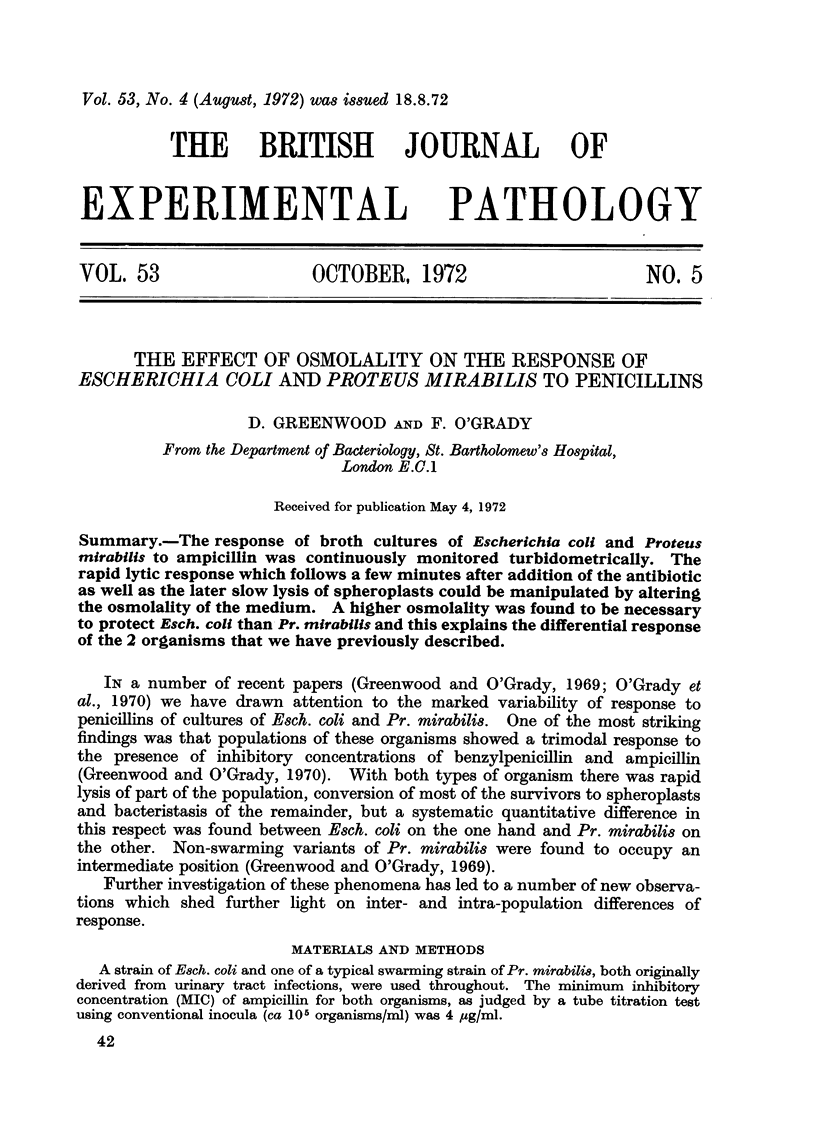
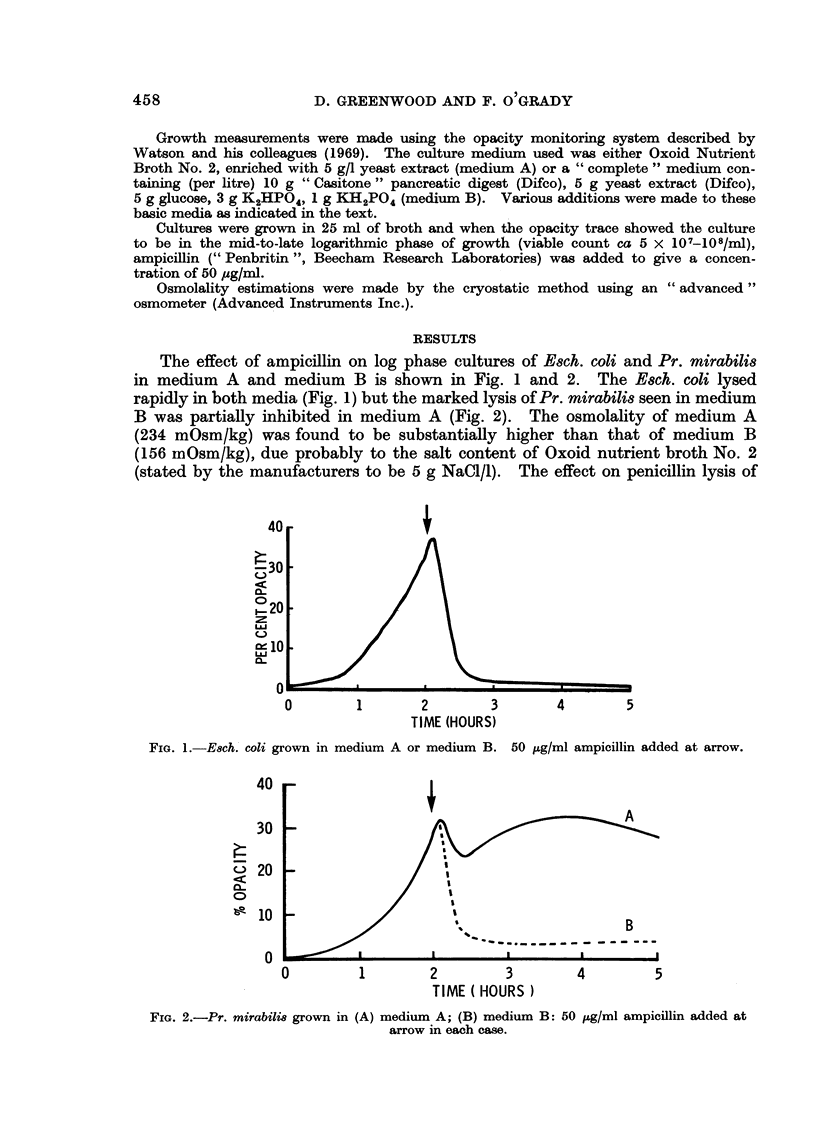


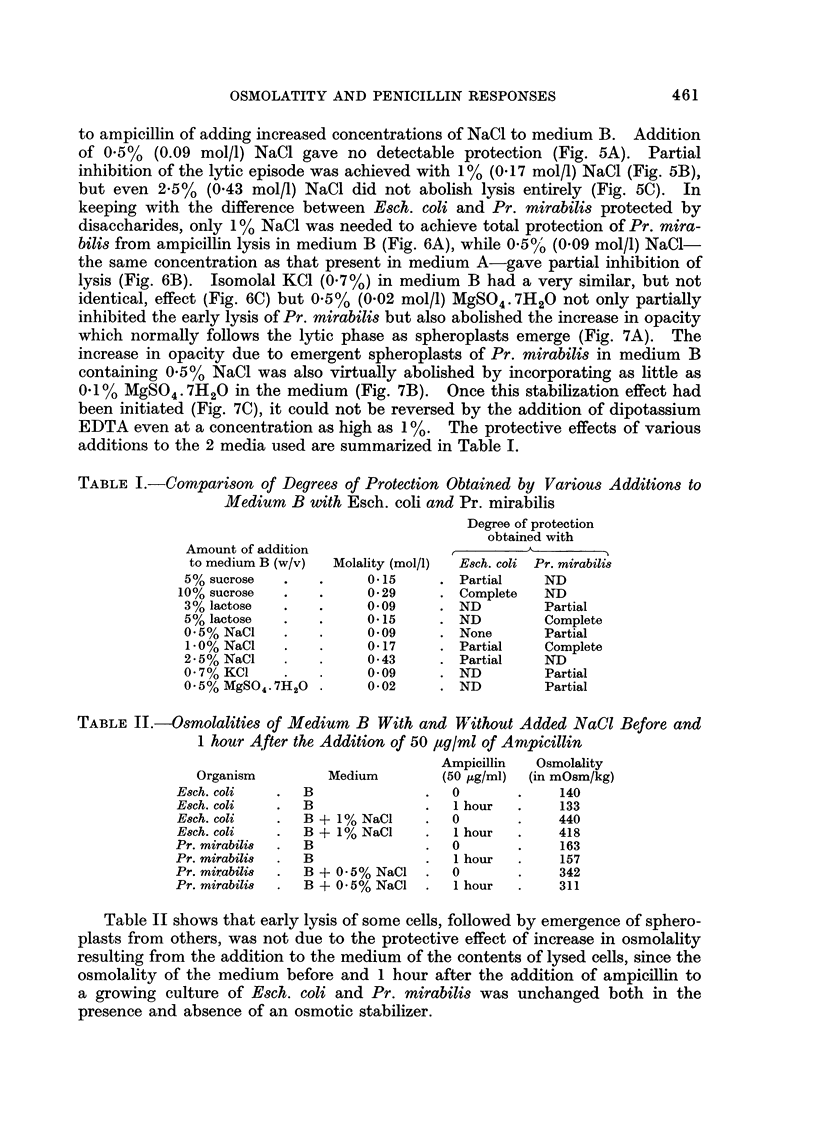
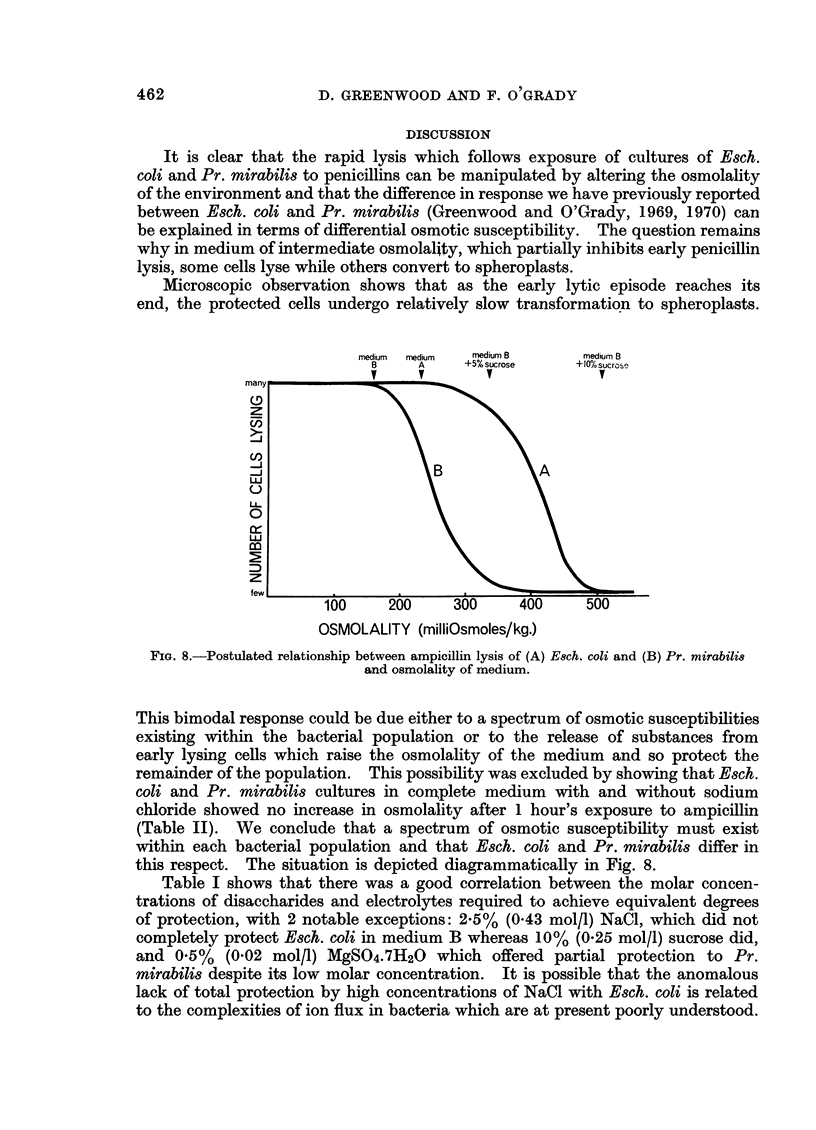
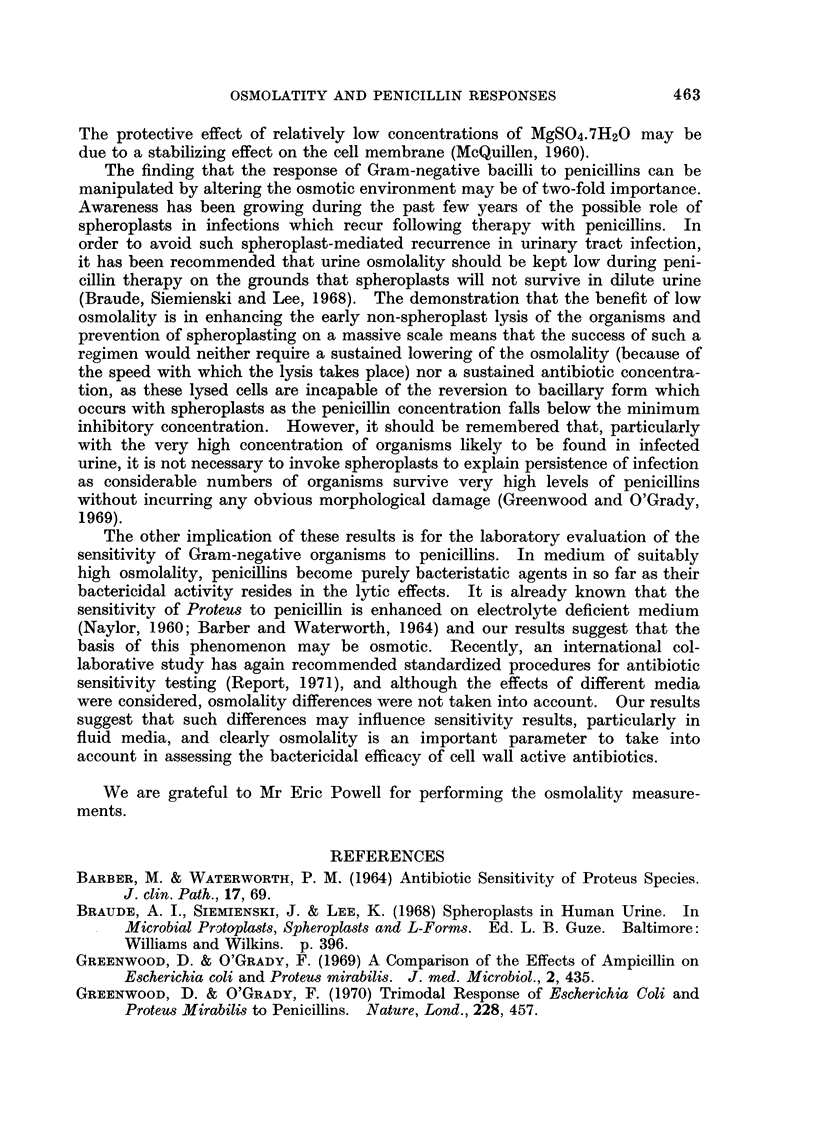

Selected References
These references are in PubMed. This may not be the complete list of references from this article.
- BARBER M., WATERWORTH P. M. ANTIBIOTIC SENSITIVITY OF PROTEUS SPECIES. J Clin Pathol. 1964 Jan;17:69–74. doi: 10.1136/jcp.17.1.69. [DOI] [PMC free article] [PubMed] [Google Scholar]
- Greenwood D., O'Grady F. A comparison of the effects of ampicillin on Escherichia coli and proteus mirabilis. J Med Microbiol. 1969 Nov 4;2(4):435–441. doi: 10.1099/00222615-2-4-435. [DOI] [PubMed] [Google Scholar]
- Greenwood D., O'Grady F. Trimodal response of Escherichia coli and Proteus mirabilis to penicillins. Nature. 1970 Oct 31;228(5270):457–458. doi: 10.1038/228457a0. [DOI] [PubMed] [Google Scholar]
- NAYLOR P. G. A note on the use of a simple medium to determine the sensitivity to penicillin of Proteus species. J Med Lab Technol. 1960 Jul;17:184–186. [PubMed] [Google Scholar]
- Watson B. W., Gauci C. L., Blache L., O'Grady F. W. A simple turbidity cell for continuously monitoring the growth of bacteria. Phys Med Biol. 1969 Oct;14(4):555–558. doi: 10.1088/0031-9155/14/4/302. [DOI] [PubMed] [Google Scholar]


